 What is Saigon? How to remove Saigon Trojan from your PC or Mac?
What is Saigon? How to remove Saigon Trojan from your PC or Mac?
The Saigon Trojan is a banking Trojan which is based on the popular Ursnif malware. It is being launched in a small-sized and carefully targeted attack campaign. Unlike other popular malware of this category, Saigon has been found to feature some really dangerous modules and it can have devastating consequences on the affected machine. Read our article to learn what the Saigon Trojan is capable of and to read instructions on safely removing active infection.

Threat Summary
| Name | Saigon Trojan |
| Type | Trojan Malware, Banking Trojan |
| Short Description | A very dangerous banking Trojan capable of overtaking control of the machines. |
| Symptoms | The victims may notice performance issues and can get infected with other malware. |
| Distribution Method | Popular Malware Infection Strategies |
| Detection Tool |
See If Your System Has Been Affected by malware
Download
Malware Removal Tool
|
User Experience | Join Our Forum to Discuss Saigon Trojan. |
The Saigon Trojan is a new new release of the Ursnif malware family of banking threats. It is one of the most widely used malware which are used by different hacking groups in order to intrude onto networks and hosts. Banking Trojans are a popular method which rely on a modular engine seeking to manipulate web fields, stealing data and hijacking cryptocurrency wallets if such are found.
There are numerous ways that potential networks and computers can acquire a sample of the infection. One of the main methods rely on social engineering tactics that manipulate the victims into thinking that they are accessing a legitimate file or message from a company or service that they trust. This organization can be done via email messages or specific hacker-controlled sites that are hosted on similar sounding domain names and have forged contents.
The virus can be placed in all kinds of malware files — they can be either application installers or documents containing dangerous macros. They are easily uploaded to the hacker-controlled sites and may also be spread over file-sharing networks, a popular option is BitTorrent where both pirate and legitimate files can be found. Other sources of the banking Trojan can include the downloading of malware-infected files that can be either documents with dangerous macros or installers of famous programs. The hackers will specifically attempt to make such files as they are much more likely to be downloaded from websites and file-sharing networks (like BitTorrent).
Remove Ursnif Trojan (Purolator Phishing) Scam
The analysis also reveals that the Saigon Trojan samples are relatively low in number compared to other banking Trojans and Ursnif ones in particular. This gives experts reasons to believe that the threat has been used in carefully selected attacks against certain victims — they are probably fine-tuned to intrude onto their networks with well-prepared parameters in advance.
The Saigon Trojan is delivered onto the victim computers as a shellcode script which is placed in a Windows Registry string. It is accessed by a special PowerShell-based interface that is set as a scheduled task. All of this implies that the malware features advanced operating system manipulation capabilities. The main component itself is placed in a Windows DLL file that is responsible for all major operations.
One of the first actions that are run by the Saigon Trojan is the data retrieval process — it will create a detailed machine ID based upon the installed hardware components. The next step is to inject itself into a system process in an unusual way which may be a form of bypassing the system’s security scanners. The results from this would be the loading of two separate components into memory and interacting with them — a public key file which is used for securing data and transmitting it over to the hackers via a specially made network connection and a scripts execution PowerShell file. The Saigon Trojan has been confirmed to make changes to the Windows Registry which can have very serious consequences on the performance of the hosts. In addition the persistent installation of the malware code makes it significantly harder to remove — the PowerShell script will automatically edit out configuration files, settings and other areas in order to make sure that the virus code will be started every time the computer is powered on.
A distinct feature of the Saigon Trojan is its advanced network configuration settings. The security analysts note that unlike most other threats from this type the Saigon infections can fine-tune connection-related parameters. The information that is relayed from the hosts to the hacker-controlled servers will be sent alongside an initial header that may contain the following fields: bot version, botnet id, client id, request type, machine uptime report and “knock” period.
As a newer version of Ursnif Saigon also has additional functionality that the hackers have made:
- Removal — The Saigon Trojan will remove itself from the system including all associated scheduled tasks and Windows Registry keys.
Data Retrieval — This function can be used both to download files from remote locations, as well as updates the core of the virus or any of its associated contents. - System Information Collection — This engine will automatically hijack information about the victim systems.
- Data Loading — This can be done either executable files or malware DLLs.

How to Remove Saigon Trojan
In order to fully remove Saigon from your computer system, we recommend that you follow the removal instructions underneath this article. If the first two manual removal steps do not seem to work and you still see Saigon or programs, related to it, we suggest what most security experts advise – to download and run a scan of your comptuer with a reputable anti-malware program. Downloading this software will not only save you some time, but will remove all of Saigon files and programs related to it and will protect your computer against such intrusive apps and malware in the future.
Preparation before removing Saigon Trojan.
Before starting the actual removal process, we recommend that you do the following preparation steps.
- Make sure you have these instructions always open and in front of your eyes.
- Do a backup of all of your files, even if they could be damaged. You should back up your data with a cloud backup solution and insure your files against any type of loss, even from the most severe threats.
- Be patient as this could take a while.
- Scan for Malware
- Fix Registries
- Remove Virus Files
Step 1: Scan for Saigon Trojan with SpyHunter Anti-Malware Tool
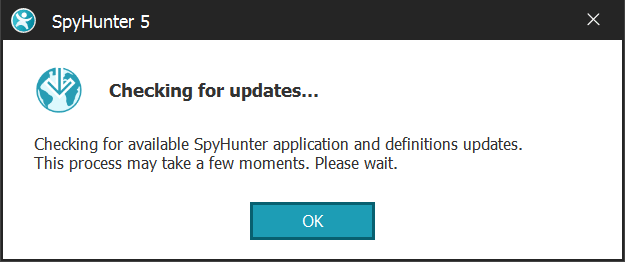

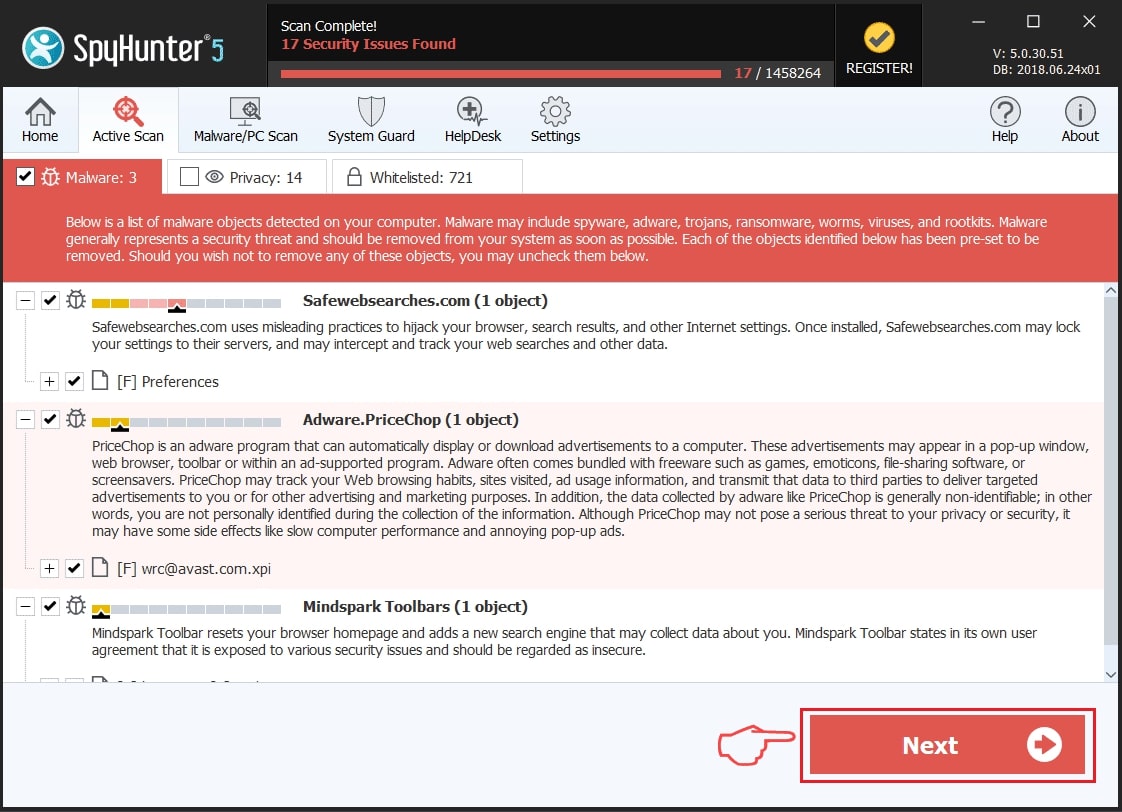
Step 2: Clean any registries, created by Saigon Trojan on your computer.
The usually targeted registries of Windows machines are the following:
- HKEY_LOCAL_MACHINE\Software\Microsoft\Windows\CurrentVersion\Run
- HKEY_CURRENT_USER\Software\Microsoft\Windows\CurrentVersion\Run
- HKEY_LOCAL_MACHINE\Software\Microsoft\Windows\CurrentVersion\RunOnce
- HKEY_CURRENT_USER\Software\Microsoft\Windows\CurrentVersion\RunOnce
You can access them by opening the Windows registry editor and deleting any values, created by Saigon Trojan there. This can happen by following the steps underneath:


 Tip: To find a virus-created value, you can right-click on it and click "Modify" to see which file it is set to run. If this is the virus file location, remove the value.
Tip: To find a virus-created value, you can right-click on it and click "Modify" to see which file it is set to run. If this is the virus file location, remove the value.Step 3: Find virus files created by Saigon Trojan on your PC.
1.For Windows 8, 8.1 and 10.
For Newer Windows Operating Systems
1: On your keyboard press + R and write explorer.exe in the Run text box and then click on the Ok button.
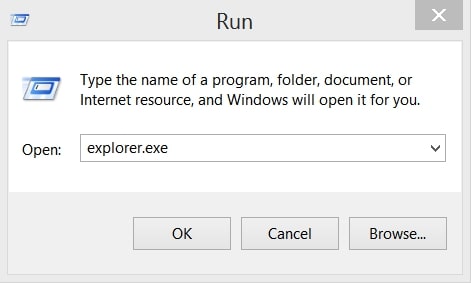
2: Click on your PC from the quick access bar. This is usually an icon with a monitor and its name is either “My Computer”, “My PC” or “This PC” or whatever you have named it.
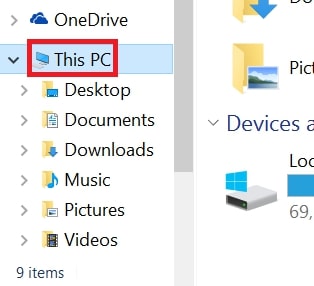
3: Navigate to the search box in the top-right of your PC's screen and type “fileextension:” and after which type the file extension. If you are looking for malicious executables, an example may be "fileextension:exe". After doing that, leave a space and type the file name you believe the malware has created. Here is how it may appear if your file has been found:
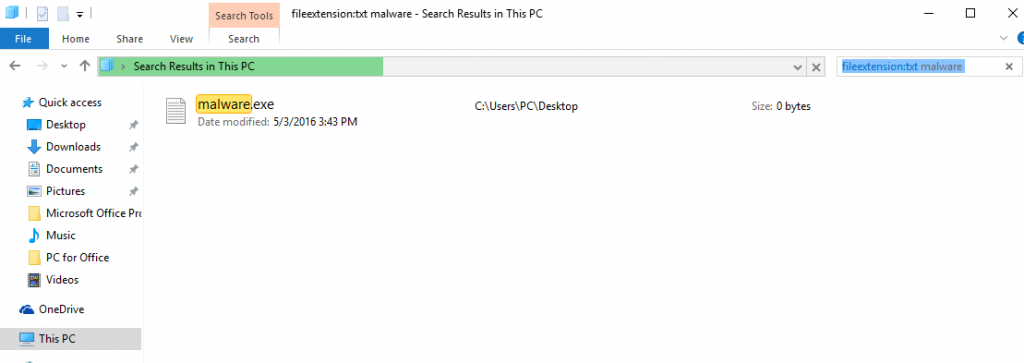
N.B. We recommend to wait for the green loading bar in the navigation box to fill up in case the PC is looking for the file and hasn't found it yet.
2.For Windows XP, Vista, and 7.
For Older Windows Operating Systems
In older Windows OS's the conventional approach should be the effective one:
1: Click on the Start Menu icon (usually on your bottom-left) and then choose the Search preference.
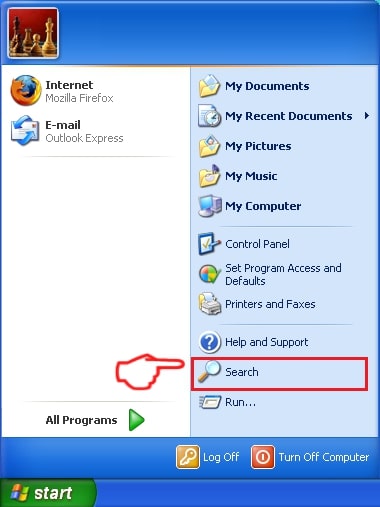
2: After the search window appears, choose More Advanced Options from the search assistant box. Another way is by clicking on All Files and Folders.
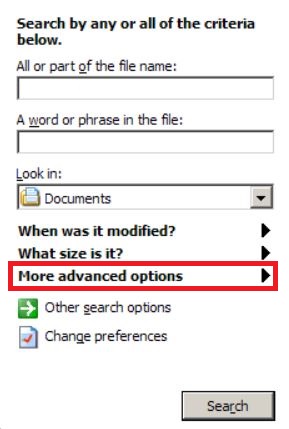
3: After that type the name of the file you are looking for and click on the Search button. This might take some time after which results will appear. If you have found the malicious file, you may copy or open its location by right-clicking on it.
Now you should be able to discover any file on Windows as long as it is on your hard drive and is not concealed via special software.
Saigon Trojan FAQ
What Does Saigon Trojan Trojan Do?
The Saigon Trojan Trojan is a malicious computer program designed to disrupt, damage, or gain unauthorized access to a computer system. It can be used to steal sensitive data, gain control over a system, or launch other malicious activities.
Can Trojans Steal Passwords?
Yes, Trojans, like Saigon Trojan, can steal passwords. These malicious programs are designed to gain access to a user's computer, spy on victims and steal sensitive information such as banking details and passwords.
Can Saigon Trojan Trojan Hide Itself?
Yes, it can. A Trojan can use various techniques to mask itself, including rootkits, encryption, and obfuscation, to hide from security scanners and evade detection.
Can a Trojan be Removed by Factory Reset?
Yes, a Trojan can be removed by factory resetting your device. This is because it will restore the device to its original state, eliminating any malicious software that may have been installed. Bear in mind that there are more sophisticated Trojans that leave backdoors and reinfect even after a factory reset.
Can Saigon Trojan Trojan Infect WiFi?
Yes, it is possible for a Trojan to infect WiFi networks. When a user connects to the infected network, the Trojan can spread to other connected devices and can access sensitive information on the network.
Can Trojans Be Deleted?
Yes, Trojans can be deleted. This is typically done by running a powerful anti-virus or anti-malware program that is designed to detect and remove malicious files. In some cases, manual deletion of the Trojan may also be necessary.
Can Trojans Steal Files?
Yes, Trojans can steal files if they are installed on a computer. This is done by allowing the malware author or user to gain access to the computer and then steal the files stored on it.
Which Anti-Malware Can Remove Trojans?
Anti-malware programs such as SpyHunter are capable of scanning for and removing Trojans from your computer. It is important to keep your anti-malware up to date and regularly scan your system for any malicious software.
Can Trojans Infect USB?
Yes, Trojans can infect USB devices. USB Trojans typically spread through malicious files downloaded from the internet or shared via email, allowing the hacker to gain access to a user's confidential data.
About the Saigon Trojan Research
The content we publish on SensorsTechForum.com, this Saigon Trojan how-to removal guide included, is the outcome of extensive research, hard work and our team’s devotion to help you remove the specific trojan problem.
How did we conduct the research on Saigon Trojan?
Please note that our research is based on an independent investigation. We are in contact with independent security researchers, thanks to which we receive daily updates on the latest malware definitions, including the various types of trojans (backdoor, downloader, infostealer, ransom, etc.)
Furthermore, the research behind the Saigon Trojan threat is backed with VirusTotal.
To better understand the threat posed by trojans, please refer to the following articles which provide knowledgeable details.


